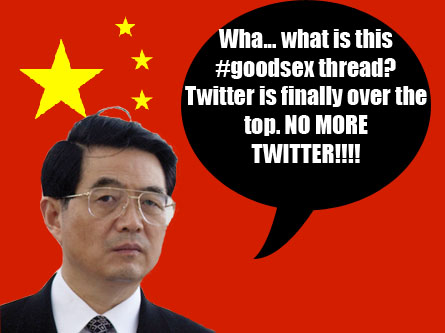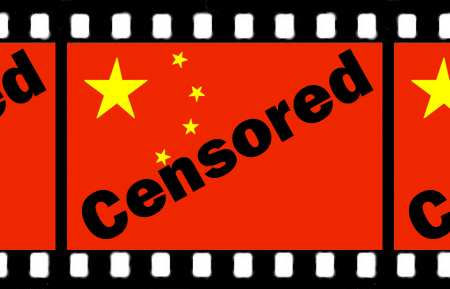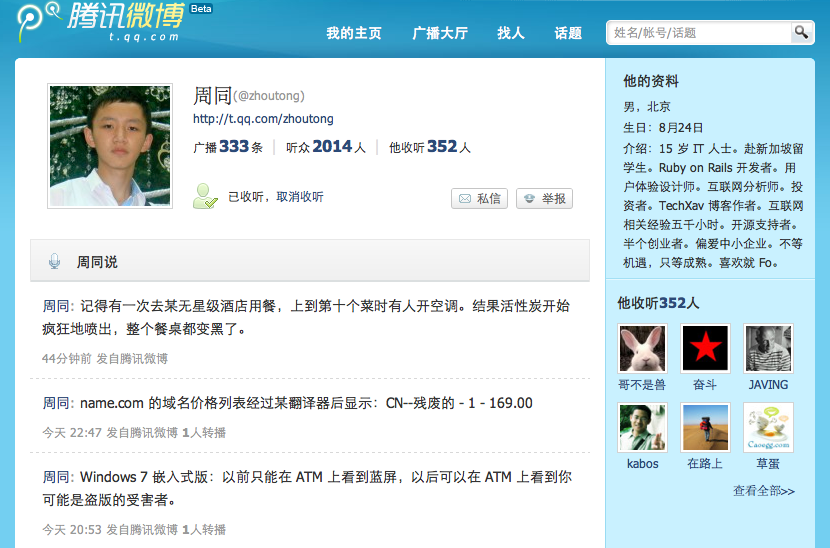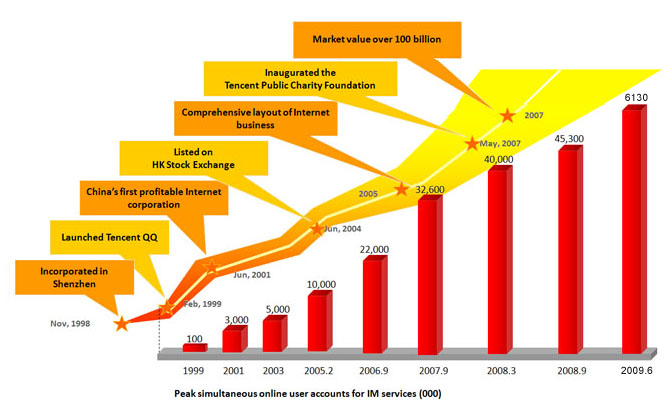Following the successful launches of Twitter’s Japanese, Italian, French and Spanish site, the folks over at the micro-blogging service plan to enter the Chinese market, which currently has over 384 million Internet users.
During a New York panel discussion on social media and digital activism last month, Chinese activist fired a question to Jack Dorsey, asking him whether he can promise availability of Twitter in China. His reply was a “yes” but added that “it’s just a matter of time”.
Twitter co-founders at Wednesday’s Chirp conference also revealed that works on developing a Chinese version of Twitter are ongoing, and the site will be make available this year.
However, as a Chinese who knows the Chinese market pretty well, I believe that Twitter will not succeed in Mainland China. Below are the five reasons why…
1. Censorship

Twitter co-founders said on Wednesday that the San Francisco-based micro-blogging service will help thwart efforts by China to censor information in that country.
“Censorship sucks,” Twitter co-founder Evan Williams said, during an on-stage chat on the opening day of a Chirp conference at the Palace of Fine Arts in San Francisco.
“We would love to enable freedom of expression and freedom of information in China.”
However, I personally think that this is not going to happen.
Many Chinese netizens are currently bypassing the GFW and using Twitter. With the power of API, the whole Twitter network can’t be blocked completely, so there are many web-based clients and proxied Twitter APIs working well in China.
The main reason why an increasing number of Chinese are using Twitter is because it’s only micro-blogging platform that is able to give them the “freedom of speech”, and they usually tweet a lot about politics, pornography and other sensitive topics.

Of course such topics are not allowed in China. It’s a common procedure that international websites are required to separate the data of Chinese users from international ones if they were to enter Chinese Market. One exemplary example would be MySpace.cn, which is not “the Chinese edition of MySpace”, but a “100 per cent native Chinese website with the American brand”.
On the contrary, Twitter can’t afford to do so because if they start self-censorship in China, they will easily lose all its Chinese users. People in China are looking for “freedom of speech” and not the Twitter platform. The attractiveness of Twitter is “no censorship”, so I believe there’s no point for Twitter to enter Chinese market officially.
2. Lack of Manpower

If Twitter were to create a Chinese site and encourage locals to join the service, it requires a lot of moderators to keep track whether the content of each tweet violates the censorship policies set by the Chinese government. One quintessential example would be Sina’s micro-blogging service. There is a specialized “censorship department” that consists of 300 highly-paid people whose job is to read every single status that fails to pass the automatic keyword filtering system, and choose whether to approve or delete them. It is estimated that the number of updates that contain sensitive keywords is at least 50,000.
Twitter currently has 140 employees working in the United States and they can’t possibly hire hundreds of people in China to check tweets for sensitive information.
For Facebook, self-censorship is possible and executable, But for Twitter, I think they’d better to invest in more manpower to reduce the worrying spam issue instead of those “non-harmonious tweets”.
3. Stiff Competition from Local Rivals
China’s largest instant messaging network Tencent QQ has recently launched a private beta version of its micro-blogging service and analysts believe that the number of users will advance with a geometric progression rather than an arithmetical one.
To be rolled out to the public next month, QQ’s micro-blogging service is likely to hit the 100 million user mark within just a month (Twitter took four years to reach 106 million). You might think it’s insane to achieve such a figure but it’s possible given that QQ has over 1 billion usernames and reached an impressive 100 million peak concurrent users online on March 7 this year. QQ will integrate the micro-blogging to its IM service, which will allow users to publish and read updates via the IM directly, though they still have to create an account with the micro-blogging platform using their unique QQ ID.
Even China’s largest Internet companies such as Baidu, Sina and Netease are quite afraid of Tencent’s microblogging platform as Tencent is now the third largest Internet company in the world in terms of total market value. It has the most number of active (monthly based) users in the whole Internet industry after 11 years of business.
It’s also one of the bidders of ICQ, and has recently acquired roughly 10 per cent of shares of DSI, the largest Internet company in Russia. Tencent’s service covers 98 per cent of total Chinese Internet users.
Micro-blogging is a “sticky” service as users need to connect with their friends, QQ, as an IM, is undoubtedly the most natural Social Networking platform in China. Almost every Chinese Internet user has a QQ account. All a user needs to do is to switch to the micro-blogging tab on their IM and he or she can easily connect with friends. As simple as that.
It would be practically useless for Twitter to enter the Chinese market. There’s nothing they can do to control the micro-blogging market. QQ’s micro-blogging platform will rule (probably over 90 percent), followed by Sina’s (8 per cent).
4. User Experience
Twitter is simple and easy to use, and this is definitely not the style of most Chinese websites. Chinese web designers usually assume that the visitors are clever and able to discover almost all of the content found on the page, and this is actually the truth.
Twitter is so simple that many Chinese people feel the features offered are boring and dull. They want a micro-blogging platform that comes complete with Photo Uploading, Video Recording, URL shortener, Feed Importer and so on. To them, using an external app is troublesome.
Rolling out a Chinese version similar to Twitter’s French, Spanish, Italian and Japanese site won’t get Twitter China anywhere. Tweaking its features to suit the Chinese will at least allow Twitter to survive in China. Most Chinese people are using modified web-based Twitter clients such as FanFou.im, which optimizes the user experience for them.
5. Chinese Edition is not a Translation

There are so many websites that have wonderful translations of Chinese language, such as Facebook, Wikipedia and of course, Google.
They have the language, but they don’t have the culture yet. For instance, Facebook is blocked by GFW mainly because of “Political Views”. In China, the political view of all people should be the same — the Communist Party of China. Such a platform, which gives the users maximum freedom, cannot survive because the leaders of the country really want all people to focus on their work and build the economy well, instead of arguing over political issues everyday.
Hong Kong S.A.R. and Taiwan are also parts of China but with different political systems, so international websites are very successful in these regions. For example, Google China has been moved to Hong Kong in order to stop censoring content, and Plurk (blocked by GFW) is very popular in Taiwan.
Twitter can stand a chance to grab a significant slice of market share in SARs, but not in Mainland China unless they really think though the reason. Unfortunately, no foreign Internet corporations today can succeed in Chinese market despite the fact that the Chinese government is pretty optimistic in accepting foreign investments and exports.


